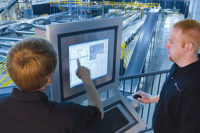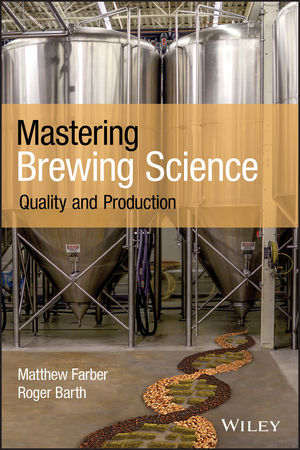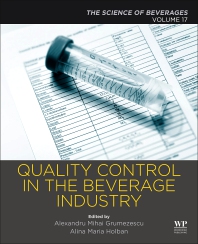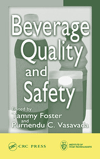Aftermarket parts offer efficient, quality options
Non-OEM parts supply cost, time savings




Although many people think of the automotive industry first when they hear the phrase “aftermarket parts,” almost every industry has some form of aftermarket presence, and the beverage industry is no exception, says Joseph Stroup, director of business development for FBN Inc., Plainwell, Mich.
“Aftermarket parts refer to parts manufactured by a company other than the [original equipment manufacturer] (OEM),” he explains. “We are unique in that our goal is to improve upon an original design and provide it to our customers at a very competitive price.”
Parts suppliers also can take on another role for their customers. American Holt Corp., for instance, is a reverse-engineering company that stocks more than 3,000 different aftermarket parts. It uses both precision metrology and chemical analysis equipment to determine the proper materials to use for manufacturing parts. It also implements contact measuring machinery and video inspection equipment to measure and design parts to within 0.0001 inches accuracy, explains Tom St. Lawrence, national sales manager for the Norwood, Mass.-based company. Jon Levy, president of the company, notes that this exactness in engineering is comparable to that of aftermarket parts suppliers in the aerospace industry. Through this approach, the company is able to design parts to fit in OEM machines that are made of the same materials as the OEM parts and offer the same fit, form and function, he says.
Similarly, FBN’s Stroup says his team spends thousands of hours in the field and in the lab observing, testing and developing parts — especially its more specialized offerings like filling valves and capper chucks — to ensure that they perform as well as or better than their OEM counterparts.
The aftermarket parts industry also offers the opportunity for companies to design parts that enhance OEM machines. For example, aftermarket parts suppliers can use more modern technology, such as the latest materials and coatings that might not have been available when the original machine was built, to increase service life expectancy, explains John Beeze, sales manager for Bevcorp LLC, Willoughby, Ohio. Aftermarket parts also can boost an OEM machine’s speed and durability and even reduce filling and blending losses, he adds. Bevcorp offers newly engineered high-speed valves, larger product inlets and sealed bearings that can help make OEM machines run faster and last longer, he explains.
Savings also can be a benefit to utilizing aftermarket parts. For those of comparable quality to OEM parts, aftermarket parts can offer an average of 30 percent savings on product price, Bevcorp’s Beeze says. “The cost of capital equipment continually increases, and the machines become larger and more difficult to install, so the aftermarket will become even more important to maintain these machines cost effectively,” he says.
This pricing also contributes to competition in the market, FBN’s Stroup notes. In order to remain competitive, OEMs, in turn, strive to improve the quality, performance and service for their parts, he says. In addition, the lower prices and availability of aftermarket parts also has pressured some OEMs to lower their prices on high-volume replacement parts, adds Mike Mangone, vice president of sales for Havre de Grace, Md.- based ShoreLine Packaging and Processing Machinery LLC, which uses aftermarket parts in its rebuilding business. “Some of the OEMs are simply not manufacturing or stocking the quantities of parts that they did in the past, and the customers cannot afford to be down,” he explains. “Now, [customers] have one or more choices, depending on the parts segment.”
Timing is everything
Aftermarket parts also give some customers a choice of how soon they will receive their replacement parts. When a customer needs a specific part replaced or repaired, they often need it handled as soon as possible, FBN’s Stroup says. “Time is everything, as every second a line is down is worth a significant amount of lost revenue,” he explains. This downtime is even more expensive for high-speed machines, he says. However, when working with international companies, lead times for replacement parts could be impacted, he explains. In these cases, customers can turn to locally based aftermarket parts suppliers for solutions, he says.
Bevcorp offers a rebuilt exchange program that keeps high-volume parts, like gearboxes, on-hand for quick replacement at a cost-effective price, Beeze says. In addition, the company employs a team of service technicians to install its aftermarket equipment so that customers don’t have to employ an in-house service staff. In emergency situations, Bevcorp’s service technicians will travel to beverage plants with required parts within four hours of the call, he says. The majority of the company’s non-emergency orders ship within
48 hours, he adds.
Also prepared to address emergencies, FBN can utilize its personal airplane to deliver parts next-day to customers in dire need of them, Stroup says.
American Holt offers a similar timing promise and ships 97 percent of customer orders on the same day that the order is placed, Levy says. This enables its customers to reduce their on-hand inventory costs by relying on American Holt’s quick turnaround with needed parts, he adds.
In other cases, customers cannot obtain a specific part in time because it is obsolete. Sometimes OEMs do not support their older machines, and in some extreme situations, the OEM has gone out of business, Bevcorp’s Beeze says. In these cases, customers can turn to aftermarket parts suppliers again to keep their machines operating.
Building a reputation
Despite the timing, pricing and quality benefits of choosing aftermarket parts, some customers still are uneasy about purchasing equipment from a company other than the OEM. “I have dealt with several customers and potential customers over the years that won’t consider aftermarket parts for certain areas of the production line,” FBN’s Stroup explains. “The majority of the lines we support are high-speed, and if someone supplies a part that does not perform or worse, fails, the customer is left dealing with the mess.” Stroup stresses that all aftermarket parts suppliers should strive to offer quality products. “The last thing we want to do is provide an inferior part,” he asserts.
For the customer, a good approach to deciding whether or not to purchase an aftermarket part is to have a conversation with the parts provider. “All aftermarket parts are not created alike, and, as a result, some [customers] have a bad taste from poor-quality parts that are in the marketplace,” American Holt’s Levy says. [Customers] should ask questions and understand how the parts are reverse-engineered and what quality-control processes are in place.”
In addition, sometimes warranties from OEMs can be voided if an OEM-supplied part is not used, FBN’s Stroup notes. To alleviate concerns with this, FBN offers a free trial period for its parts to prove their performance and help give the customer reassurance that their line will run well with the aftermarket parts, he says.
Aftermarket parts suppliers who want to help build their own reputations, as well as that of the overall aftermarket parts industry, should focus on what they know, Bevcorp’s Beeze advises. “The key to success in aftermarket is to stay in the machine markets that you know well and can support on an engineering and service basis,” he says.
As aftermarket parts companies continue to build their positive reputations, and as the prevalence of aftermarket parts grows, customers will feel more confident in the value that they offer and choose aftermarket parts for their manufacturing needs, Shoreline’s Mangone says.
Looking for a reprint of this article?
From high-res PDFs to custom plaques, order your copy today!










